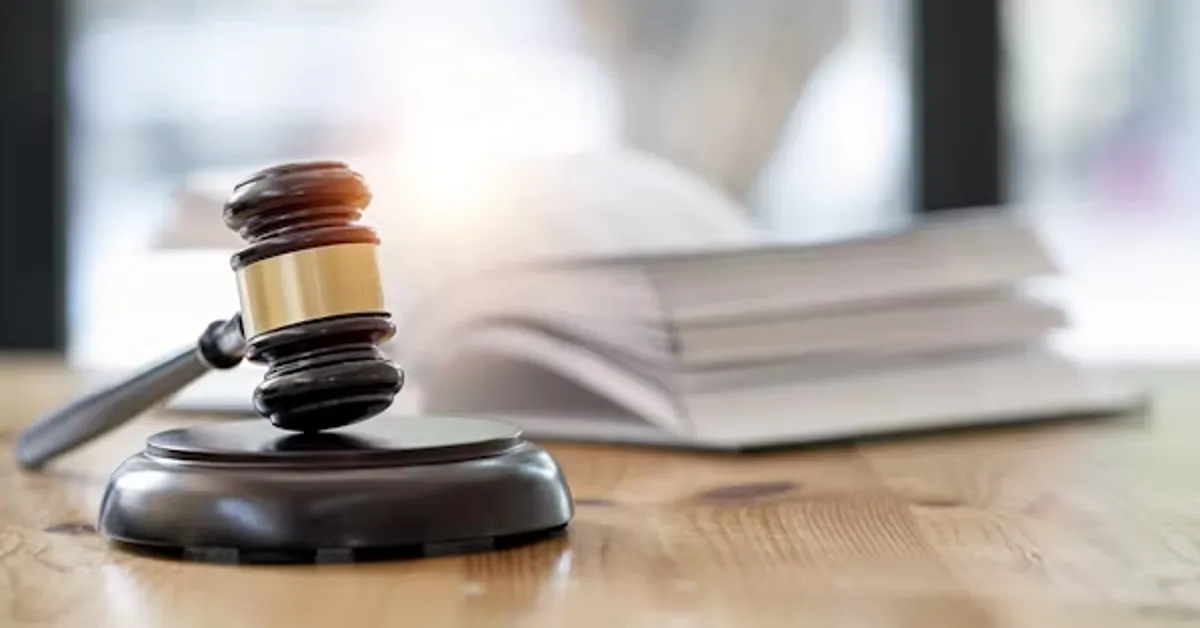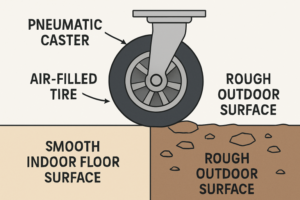The relationship between politics, law, and public institutions has often sparked controversy in American history. Among the more striking recent examples is the lawsuit concerning former President Donald Trump’s removal of members from the Corporation for Public Broadcasting (CPB) board. The case sits at the intersection of executive authority, federal governance, and the independence of media institutions. Unlike high-profile legislative disputes or headline-dominating trials, this lawsuit highlights an often-overlooked domain: the governance of publicly funded media and the political tensions surrounding it.
This article provides a deep and structured overview of the Trump CPB board removals lawsuit. We will cover the background of the CPB, the legal dispute over removals, arguments from both sides, judicial proceedings, and the broader implications for media independence, executive powers, and public trust.
Understanding the Corporation for Public Broadcasting
Before analyzing the lawsuit, it is essential to understand what the Corporation for Public Broadcasting is and why its governance matters.
The CPB is a nonprofit corporation created by the U.S. Congress in 1967 to act as a steward of federal funds for public media. It supports public television, radio, and digital content, ensuring Americans have access to educational, cultural, and non-commercial programming. Importantly, the CPB was designed to remain independent of direct political interference, so its board of directors plays a crucial role in maintaining that neutrality.
The CPB board consists of members appointed by the President of the United States and confirmed by the Senate. Terms are staggered to prevent sudden political takeovers, and the structure intentionally safeguards against drastic swings in leadership due to political cycles. This institutional setup makes any attempt at abrupt removals controversial and potentially unlawful.
The Background of the Trump CPB Board Dispute
During Donald Trump’s presidency, conflicts arose over the direction and perceived political leanings of publicly funded broadcasting. Trump, who often criticized mainstream media outlets and public broadcasting organizations for alleged bias, sought greater control over institutions like the CPB.
The controversy escalated when Trump attempted to remove or replace board members before their terms had expired. Normally, CPB board members are expected to serve fixed terms and cannot be removed without cause. By challenging this norm, Trump ignited debates about whether a President has the legal authority to dismiss CPB directors prematurely.
This move set the stage for a lawsuit that would question the limits of presidential power and the legal protections governing independent public institutions.
Legal Framework Governing CPB Board Membership
The CPB is somewhat unique among federally funded entities. Unlike purely executive agencies, it was designed to function independently, akin to other federal corporations or commissions. To safeguard its independence, Congress embedded specific rules in the CPB’s governing charter:
| Aspect | Details |
|---|---|
| Appointment | CPB board members are nominated by the President and confirmed by the Senate |
| Term Length | Six years, staggered to ensure continuity |
| Removal Authority | Typically, removal is not granted to the President except in extraordinary cases |
| Oversight Mechanism | Congress oversees CPB funding but avoids day-to-day governance |
These legal safeguards created the backbone of the lawsuit. The central question became: Does the President have inherent authority to remove CPB board members at will, or are they protected from such removals to preserve institutional independence?
The Lawsuit: Key Claims and Counterclaims
The Trump CPB board removals lawsuit revolved around two competing interpretations of law and governance.
- Plaintiffs’ Claims
- The plaintiffs, consisting of removed or threatened CPB board members, argued that Trump’s actions violated statutory protections.
- They claimed that premature removals undermined the CPB’s independence and congressional intent.
- The lawsuit emphasized that the President’s authority, while broad, is not absolute, especially when Congress has designed safeguards for independent institutions.
- Defense by Trump’s Administration
- The administration countered by arguing that the President, as the appointing authority, should also hold removal powers.
- They leaned on the principle of executive control, citing the President’s responsibility to oversee federal entities.
- The defense asserted that without removal authority, the President would lack sufficient oversight over the CPB, potentially allowing unaccountable governance.
This clash mirrored broader debates in constitutional law regarding executive authority versus legislative protections.
Judicial Proceedings and Interpretations
When the lawsuit reached federal court, judges faced the challenge of interpreting both the statutory language governing the CPB and constitutional principles of separation of powers.
- Initial Hearings
The court examined the statutory framework of the CPB, focusing on whether Congress had explicitly limited presidential removal powers. Early hearings revealed tension between judicial reluctance to overrule presidential discretion and the clear congressional intent to insulate the CPB. - Key Judicial Questions
- Did the CPB’s charter explicitly restrict removals?
- Does executive authority implicitly allow removal powers even when not explicitly granted?
- Would upholding Trump’s removals undermine Congress’s intent for independence?
- Interim Rulings
Some judges indicated skepticism toward unrestricted executive authority in this case, citing precedents involving other independent boards and commissions. However, the proceedings also revealed deep divisions about how much independence Congress can truly insulate from presidential oversight.
Broader Implications of the Lawsuit
The Trump CPB board removals lawsuit extends beyond the narrow issue of a board dispute. It raises significant questions about the balance of power, media independence, and democratic governance.
1. Executive Power
The case touches on whether Presidents can reshape independent boards to align with political agendas. If removal authority is upheld, it could embolden future administrations to exert greater influence over institutions designed to be neutral.
2. Legislative Intent
Congress explicitly created staggered terms for CPB board members to avoid domination by one administration. A ruling in favor of Trump CPB board removals lawsuit could weaken Congress’s ability to protect institutional independence.
3. Media Independence
Public broadcasting has long been a target of political criticism, but its independence remains crucial for balanced and educational content. The lawsuit raises alarms about potential politicization of public broadcasting if presidential removals become standard practice.
4. Public Trust
The perception that CPB governance could be swayed by political power struggles risks undermining public trust in publicly funded media outlets like PBS and NPR.
Comparative Context: Other Independent Boards
To fully understand the stakes, it is helpful to compare the CPB with other boards and commissions.
| Institution | Removal Rules | Purpose of Independence |
|---|---|---|
| Federal Reserve Board | Members serve fixed terms, removable only for cause | Prevents political manipulation of monetary policy |
| Federal Communications Commission (FCC) | Commissioners removable only for cause | Ensures fair regulation of communication industries |
| CPB Board | Terms fixed, removals highly restricted | Preserves nonpartisan nature of public broadcasting |
This comparison shows that Congress has consistently shielded critical institutions from executive overreach. The CPB is not unique in this regard; its lawsuit is part of a broader constitutional tradition of independence.
Potential Outcomes and Long-Term Effects
The lawsuit presents several possible outcomes, each with long-lasting consequences:
- Court Upholds Trump’s Authority
- Would strengthen executive power over CPB.
- Risk of future administrations reshaping CPB leadership at will.
- Potential erosion of CPB’s reputation for neutrality.
- Court Sides with Plaintiffs
- Would reaffirm congressional intent and protect board independence.
- Could set a precedent limiting executive removal authority in other cases.
- May encourage greater institutional resilience against political interference.
- Compromise Ruling
- Court may permit limited removals under certain conditions.
- Could lead to ambiguous governance rules requiring further clarification from Congress.
Lessons for Governance and Democracy
At its core, the Trump CPB board removals lawsuit illustrates the delicate balance of governance in the U.S. democracy. Independent institutions like the CPB safeguard against politicization, but they are only as strong as the laws and judicial rulings that uphold them.
The lawsuit demonstrates:
- The importance of clear statutory language to prevent abuse.
- The ongoing struggle between executive efficiency and institutional independence.
- The critical role of courts in interpreting congressional intent.
Ultimately, this case underscores that democracy is not just about elections and laws, but also about maintaining structures that protect fairness and neutrality in public institutions.
Conclusion
The Trump CPB board removals lawsuit is more than a dispute about board members; it is a referendum on the balance of power between the executive and legislative branches, the independence of public institutions, and the integrity of publicly funded media.
By challenging traditional protections, Trump CPB board removals lawsuit’s actions forced the courts, Congress, and the public to re-examine the role of executive power in shaping independent governance. Whether viewed as an overreach or a legitimate exercise of authority, the case will have long-term implications for the relationship between politics and public broadcasting in the United States.
For future policymakers, this lawsuit is a reminder of the need to protect institutional independence while also ensuring accountability. For the public, it highlights the importance of vigilance in preserving democratic norms.
ALSO READ: Tech Giants Envision Future Beyond Smartphones
FAQs
1. What is the Trump CPB board removals lawsuit about?
The lawsuit centers on former President Donald Trump’s attempt to remove Corporation for Public Broadcasting board members before their terms expired, raising questions about executive authority and board independence.
2. Why is the CPB board important?
The CPB board governs the distribution of federal funds to public media, ensuring independence from political influence and maintaining public trust.
3. Can a President legally remove CPB board members?
This is the core legal question. Congress designed CPB terms to protect independence, suggesting removals without cause may exceed presidential authority.
4. What are the broader implications of this lawsuit?
The case could reshape the balance of executive power, congressional authority, and the independence of public institutions like the CPB.
5. How does this compare to other independent boards?
Similar to the Federal Reserve and FCC, the CPB board was designed for independence, with protections against at-will presidential removals.









